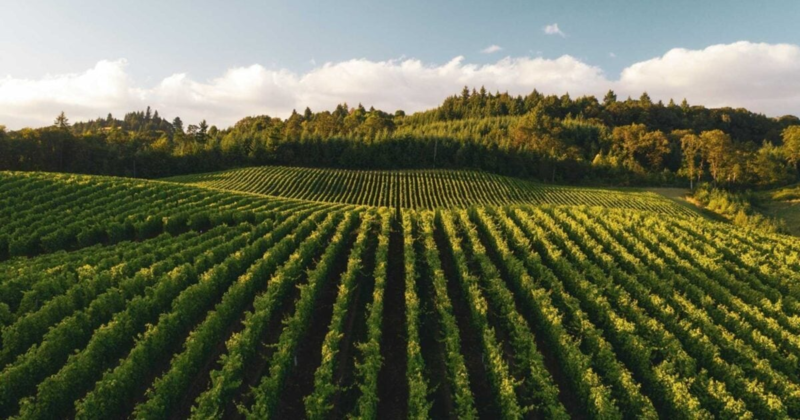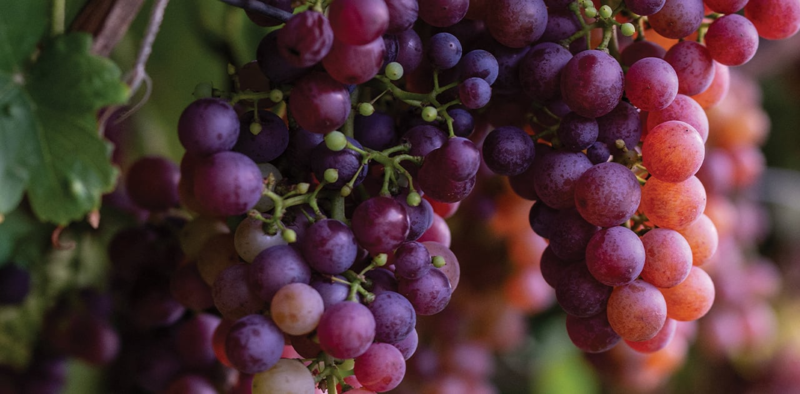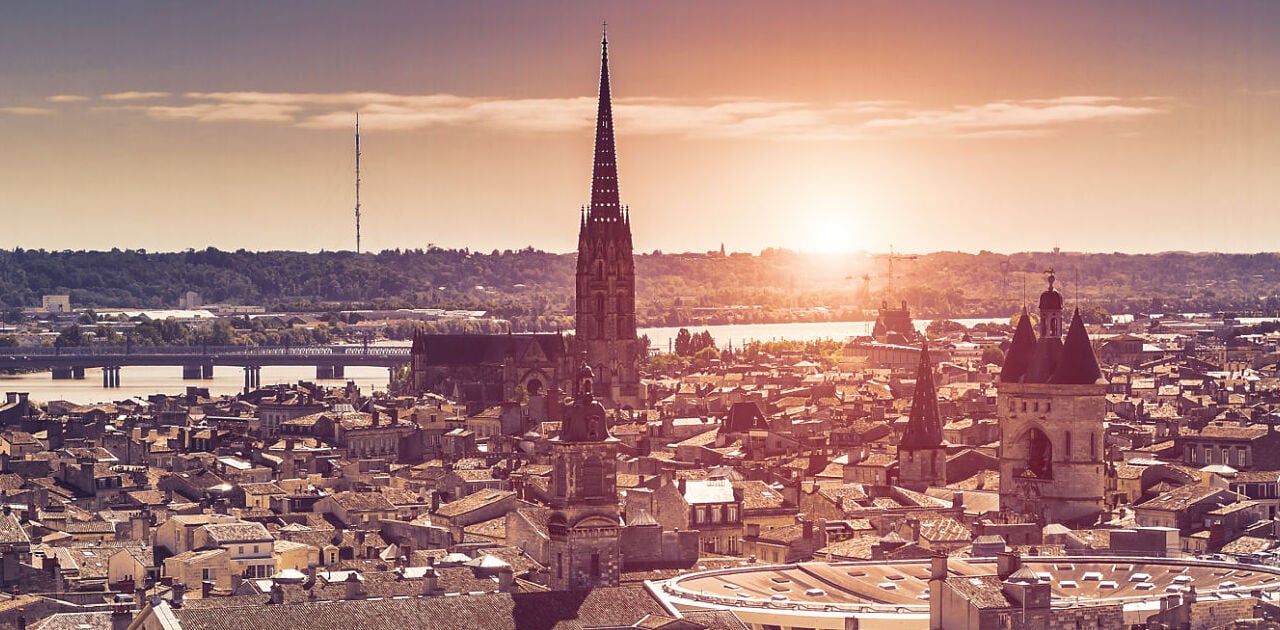
BURGUNDY WINE GUIDE
The French Wine region of Burgundy (aka “Bourgogne”) may be small in size but its influence is huge in the world of vino. The complexity of Burgundy can cast fear into the heart of even a seasoned wine pro, but fear not – the region need only be as complicated as you want it to be. Yes, it is home to some of the most expensive wines in the known universe, but there are tasty and affordable wines too.
1. Burgundy Wine History
About 200 million years ago, the region was part of a vast, tropical sea which created limestone soils. These soils are the secret behind the zesty minerality that’s the hallmark of Burgundy wines. In fact, if you venture into the vineyards you can find chunks of limestone or marl (limestone mixed with clay) that contain fascinating fossilized sea creatures mixed within.

Winemaking goes back to the Romans in the 1st century AD, but it was the Catholic monks that really established the vineyards in the Middle Ages. These guys grew the grapes for the church and the aristocratic Dukes of Burgundy. The French Revolution gave the land back to the people who, today, pride themselves on their attachment to the land. The people’s pride continues to grow and they are practicing sustainable, organic, and bio-dynamic viticulture and winemaking in ever increasing numbers.
Just The Facts: Burgundy Wine
The easiest way to wrap your brain around Burgundy is to understand that there are really only two grape varieties to remember:
Pinot Noir & Chardonnay
To the ‘vigneron” (winemakers/growers) Burgundy is not only the original home of these grapes, but the “terroir” (tare-wah) that best expresses their character – elegant, aromatic, complex and highly enjoyable!
Q: What is Terroir?
The symbiosis of grapes, soil, climate, vineyard placement, and human touch, all rolled into one. Burgundy is all about “terroir” – it’s not just the taste of rocks.
2. Where Exactly is Burgundy?
Located in the east-central part of France, Burgundy has 5 wine growing areas (not including Beaujolais and Châtillonnais):
- Chablis
- Côte de Nuits
- Côte de Beaune
- Côte Chalonnaise
- Mâconnais
CHABLIS
"Famous for zesty Chardonnay"
Chablis is the growing region located furthest north and is geographically set apart from the rest of Burgundy. The river Serein (Serene) flows through the area, moderating the climate, and the grapes have been grown here since the Cistercian monks first started the vineyards in the 12th century.

In reality, it’s really closer to Champagne, both in terms of location and climate, with harsh cold winters, spring frost, and hot summers. The dominant soil here is called “Kemmeridgian” limestone, just like in Champagne. Its white chalky texture is great at retaining and reflecting the warmth of the sun, sorely needed this far north, which also helps the grapes ripen and gives the wines a purity and crispness that just says, “Chablis.”
All the wines are white and made with Chardonnay grapes.
CÔTE DE NUITS
"Famous for the richest Pinot Noir"
Côte de Nuits Wine MapThe Côte de Nuits (named after walnut trees) is home to 24 Grand Cru vineyards and some of the world’s most expensive vineyard real estate. The area begins just south of Dijon and ends at the village of Corgoloin. 80% of the wines produced here are Pinot Noir and the remaining 20% are either Chardonnay or Rosé - a specialty of Marsannay.

The Grand Cru vineyards form a patchwork on the eastern slopes facing the valley of the Saône River, starting at the village of Gevery Chambertin, past Morey St-Denis and south to Vougeot and Vosne Romanée. Most are small and can have many owners, due to the structure of post French Revolution inheritance laws. These renowned expressions of Pinot Noir can age for decades – and it might just take that long to save up for them, as prices can easily creep up into thousands of dollars!
But don’t give up! Try some of the Côte de Nuits Village wines from Fixin, Brochon, Premeaux, Comblanchien, and Corgoloin. Mostly Pinot Noir, the wines show classic full-bodied Burgundy notes of black currant, cherry, fresh red fruits, and earthy mushroom and spice. Offerings in the Premier Cru category can be good buys, as well and perfect for special occasions.
CÔTE DE BEAUNE
"Famous for rich Chardonnay"
The Côte de Beaune – named after the medieval village that is the heart of wine commerce in Burgundy – the wine from this region is quite different from that of its neighbor to the north. Here, the valleys are open and rolling, the vineyards have more of a southeasterly exposure, and Chardonnay plays a more important role with 7 of the 8 Grand Cru vineyards producing white wine – Corton, Corton Charlemagne, Montrachet (literal translation: Bald Mountain), being some of the well known names. Again, you don’t need to mortgage the farm to enjoy amazing wines from this region.

Buying Tip!
Look for the Côte de Beaune Village and Premier Cru wine from
- Chassagne-Montratchet
- Santenay
- Meursault
- Puligny Montrachet
- St. Aubin
- Volnay
- Pommard
- Beaune
The whites are filled with aromas of soft white flowers, dried grasses, fresh apple and pear, and sometimes a touch of hazelnut.
The reds will be a joy to drink now, or in about 5 years, with touches of plum, cherrystone, white tobacco, and that Burgundian signature of minerality and good acidity.
Côte de Nuits + Côte de Beaune = Côte d'Or!
The 2 most historically important regions in Burgundy make up the Côte d’Or or Golden Slope
CÔTE CHALONNAISE
"Great for Value Pinot Noir and Sparkling Crémant"
Our next stop in our tour of Burgundy is the Côte Chalonnaise, situated between the towns of Chagny and Saint-Vallerin. Here there are no Grand Cru vineyards. The Dukes of Burgundy were centered in Dijon and liked to keep their holdings close to home. They considered these areas to the south to be more rural and for the peasants. What a shame, they really missed out on some superb wines!

The first village in the northern part of the region is Bouzeron, the only appellation devoted to the other white grape of Burgundy, Aligoté. This is a perfect summer sipper or choice for fish and shellfish. Aligoté is floral, with notes of citrus and flint, and perhaps a touch of honey. Delicious.
Another village that does something a bit different (do we see a pattern emerging? ) is Rully, a vibrant center of Cremant de Bourgogne production since the 19th century. These white and rosé sparklers are made in the traditional method, just as in Champagne.
The villages of Mercurey, Givry, and Montagny lay atop wonderful soils; layers of Jurassic limestone and marl with topsoils of eroded pebbles and clay. In fact, the area around Givry, in the middle of the Chalonnaise, has over 13 types of soil. These different plots give the wines individual character and the winemakers here really know their soils, with some having held the vineyard lands since the 17th century.
The wines from this area are good value. They range from smooth Chardonnays with subtle oak influences and ripe tree fruits to more rustic Pinot Noirs, filled with dried strawberry, cherry, earth and forest influences, and even suede-like tannins.
MÂCONNAIS
"Awesome Valued Chardonnay"
The most southerly region, and the largest of Burgundy, is the Mâconnais. Once thought of as "ordinary," this region is somewhat the "rogue" of the family. During hard times, like the worldwide depression of the 1920s and during the two World Wars, this region felt the brunt of the misfortune. Many of the local growers sold their grapes to co-operatives in order to survive. By the 1960s and 70s, tastes began to change and the consumption of wine began to drop. The growers realized they needed to improve the wines if they wanted to compete. Fruit quality standards were set and many younger growers, inheriting the family vineyards, decided to make their own wines.

Located between the town of Tournus and St. Veran, it lies at the crossroads between Northern and Southern France. The change is striking. As you travel south, even the buildings appear different – more Mediterranean in color and style with curved tiles on the rooftops. The climate is decidedly warmer too; in fact, harvest begins a full two weeks earlier here than in Chablis.
In the centre of the region is Viré-Clessé. Although it was declared as an appellation in 1999, outstanding wines have been made here for centuries.
The influence of the warmer climate shows up in the well-structured Chardonnays, with notes of ripe stone fruits, honeysuckle, citrus peel, and wild herbs.
The main area, and the most famous, is in the south: Pouilly-Fuissé. This region is a beautiful, open amphitheater of vineyards. The surrounding villages lay in the valley bottom, cast in the shadow of Mont Solutré and Mont Vergisson. Many of the vineyards border Beaujolais, just over the hills to the south. The soils here are full of limestone with a little granite as well.
The wines are white, made from Chardonnay, and display soft apple, pineapple, and white peach aromas, with wonderful structure and freshness.
3. Burgundy Wine Classification
Find better quality Pinot Noir and Chardonnay from Burgundy by understanding how the wines are classified. There are over 100 "appellations," or approved wine growing areas, and these are divided into 4 levels of quality.
- 1% Grand Cru e.g. Grands-Echézeaux, Montrachet
- 10% Premier Cru e.g. Vosne Romanée 1er Cru
- 37% Village Wines e.g. Savigny-Les-Beaune
- 52% Regional Wines e.g. Crémant de Bourgogne

Regional Wines
Regional Wines can be made from grapes grown anywhere in Burgundy and tend to be fresh, light, and lively, making them terrific sippers or aperitif wines. You will find them labeled “Bourgogne Rouge” (red) or “Bourgogne Blanc (white). Don’t forget to check out the back label on these wines! They are now allowed to note the grape variety, which can be really helpful.
If you like sparkling wines, the delightful “Crément de Bourgogne” is also in this category.
Village Wines
The next step-up are the “Village” wines, named after the towns near to where the grapes are sourced. These wines are still fresh and fruity, with little-to-no oak, but are a tad more complex. Look for names like “Pouilly Fuisse,” “Santenay,” “Givry,” or “Mercurey.”
Premier Cru Burgundy
“Premier Cru” wines are from special vineyard areas within a village. These bits of vineyard are called “climats” (clee-mats) and produce wines that are a bit more intense than the regular old Village wines! This might be because of the type of soil, the way the vineyard faces the morning sun, longer aging in oak, or a myriad of other reasons. Premier Crus are still affordable and make marvelous food wines. The label will say “Premier Cru” or “1er Cru.”
Grand Cru Burgundy
And finally, the big daddies of Bourgogne – the “Grand Cru” with famous names like Romanée Conti, La Tâche, Montrachet, etc., and a label that will proudly proclaim the "Grand Cru" status! Although they account for just over 1% of Burgundy’s annual production, these are the wines for which people are willing to pay top dollar. Bold, powerful, complex and made for cellaring, they are the epitome of both Pinot Noir and Chardonnay. There are a total of 33 Grand Cru vineyards in Burgundy – some are just inches away from a Premier Cru vineyard.
The most important thing about Burgundy is that there are always exceptions to every rule – and here’s one: Remember the classifications of wine that apply to Burgundy? Well they don’t apply in Chablis. The area known for zesty Chardonnay has its very own ranking system.
Chablis Classification System
- Petit Chablis: Produced from grapes grown surrounding the village, which are higher in acidity and have lots of light citrus character. These are wonderful when drunk young, so look for recent vintages.
- Chablis: These wines are a bit rounder and more minerally with grapes sourced from the limestone slopes near the village of Chablis. The majority of the wines we see on our local shelves are in this category.
- Premier Cru Chablis: Only about 15% of the annual production, these wines are more nuanced and elegant coming from vineyards filled with that wonderful Kimmeridgian limestone marl, giving them a distinctive character. Look for climate names on the label like “Mont de Milieu” (“Mount in the middle”), “Côte de Léchet” (really zesty), or “Fourchaume” (fruity).
- Grand Cru Chablis: These vineyards are located in a beautiful arc north of the town of Chablis, where the steep slopes face south-southwest. There is technically only one Grand Cru, but there are 7 "climats" inside that Grand Cru, and their names will be on the label: Blanchot, Bougros, Les Clos, Grenouilles, Presuses, Valmur, and Vaudésir. The Grand Cru wines in Chablis can taste dissimilar to the rest of Chablis mainly because many are aged in oak. The Grand Cru vineyards produce wines that age beautifully with floral honey notes and a refreshing flinty acidity.







